DOT Reflective Tape Requirements
Visibility is essential on America’s roads. Darkness, precipitation, fog, smoke, and other weather conditions can limit drivers’ ability to see other vehicles and the road itself. Research has found that crashes occurring during periods of poor visibility(opens in a new tab), from factors like fog or smoke, were 3.24 times more likely to cause severe injuries and 1.53 times more likely to result in multi-vehicle accidents.
The U.S. Department of Transportation (DOT) has a number of regulations meant to aid visibility when conditions make it difficult to see. For example, since 1992, new trucks and trailers must have specific types of reflective tape on their sides, bottom, and back to increase visibility. The National Highway Traffic Safety Administration (NHTSA) estimates that this simple step stops 7,800 accidents and prevents 350 fatalities(opens in a new tab) each year.
Here is a look at the safety benefits of reflective tape and what the owners of certain commercial vehicles need to do to comply with reflective tape regulations.

Reflective tape vs. retro-reflective tape
As the name suggests, reflective tape reflects light. Beams from headlights, for example, bounce off the surface, making the tape visible to drivers even though it does not have its own light source.
Retro-reflective tape also causes light to reflect. However, it has one important trait that regular reflective tape lacks. Retro-reflective strips cause the light to reflect back in the exact direction where it originated. The intensity of the reflection makes it easier for other drivers to see.
Studies have found retro-reflective tape to be more effective at increasing visibility(opens in a new tab), especially when it relies on specific colors and patterns. The U.S. DOT has mandated that trucks and trailers use reflective strips that provide the best visibility for drivers. To comply, trucks need to have tape that meets size and color requirements and has retro-reflective qualities.
What is DOT C2 reflective tape?
Not only do semi-trucks, trailers, and straight trucks need reflective tape to comply with DOT regulations, but they also need a product with specific qualities. DOT C2 is highly reflective, has an alternating red and white color pattern, and a two-inch width. These qualities allow DOT C2 to comply with the rules and regulations for trucks.
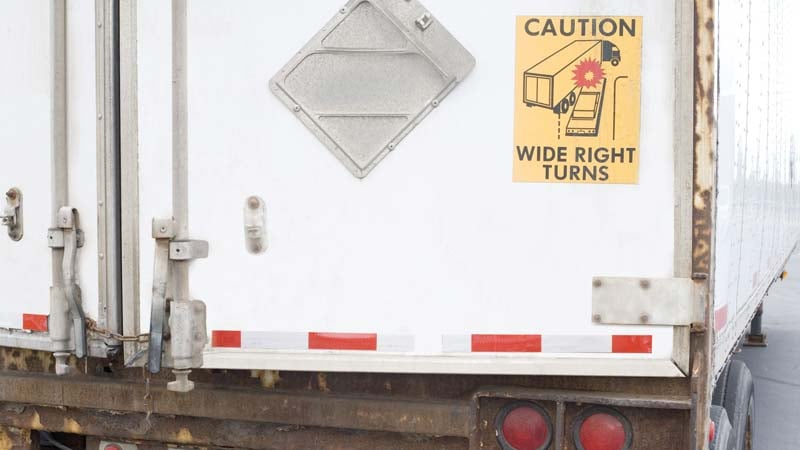
Vehicles required to have DOT reflective tape
The Federal Motor Carrier Safety Administration (FMCSA) outlines the requirements for the types of vehicles needing reflective materials in the Code of Federal Regulations Title 49 (49 CFR)(opens in a new tab) Part 393.
Commercial straight trucks need to have reflective tape, as do commercial trailers and semi-trucks.
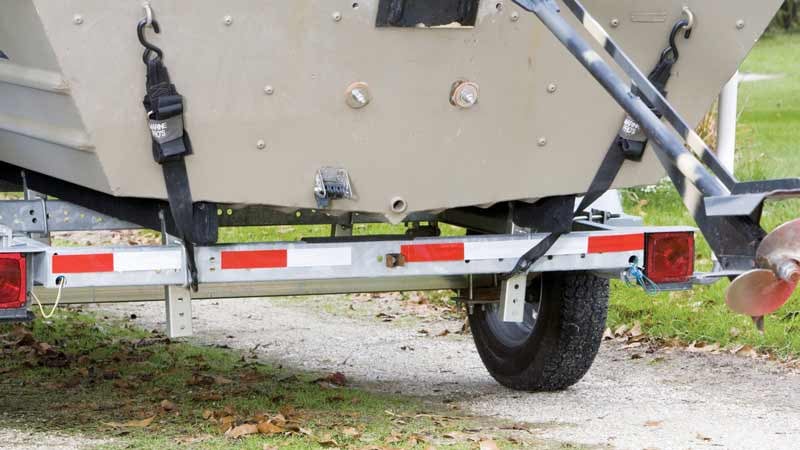
Trailers
Trailers need to have reflective tape if they weigh more than five tons and are more than 80 inches wide. DOT C2 tape needs to be placed on the back and sides of the trailer to be in full compliance with the regulations.
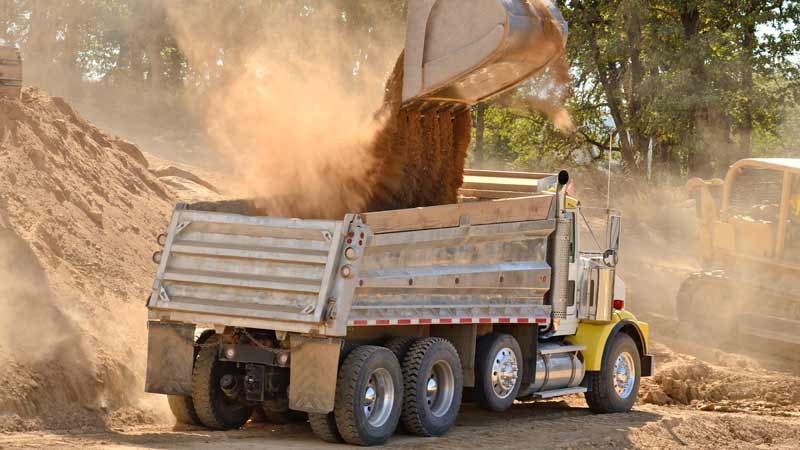
Straight trucks
Straight trucks also have to abide by reflective tape regulations if the trucks are large enough. A straight truck is a vehicle that does not have a detachable trailer. It can have an attached trailer or other features. For example, dump trucks and box trucks are all considered straight trucks. If they are 80 inches wide and five tons in weight, they must comply with visibility laws.
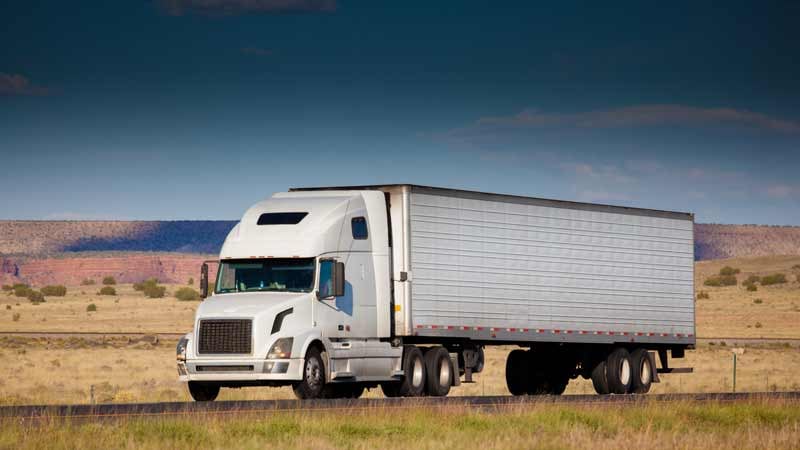
Semi-trucks
The regulations for semi-trucks are the same for commercial trailers that are more than 80 inches wide. The tape needs to be attached to the trailer, but there are no DOT regulations requiring the use of reflective tape on the truck itself.
Why are only some vehicles required to have reflective tape?
All vehicles are required to have proper reflective surfaces to ensure visibility. On personal cars and smaller commercial vehicles, the built-in reflectors and lighting are sufficient to provide the necessary visibility features. Because of their size, trailers and large commercial trucks have gaps that can hinder visibility.
DOT tape standards
The DOT sets minimum standards for applying reflective tape to trucks and trailers. Like OSHA hazard communication standards, the DOT requires that specific types of products and placement be followed to meet compliance. Here are the details truck owners and drivers need to consider.
Type
There are many types of reflective tape, but only two-inch, retro-reflective tape with red and white alternating colors and white/silver tape meet DOT standards. Reputable retailers will sell this tape as DOT C2 compliant.
There is one exception to this rule. It is possible to use two strips of 1-inch tape, applied directly parallel to create a solid 2-inch coverage area.
Placement
Placement (PDF opens in a new tab) is important for compliance. Strips of two-inch-wide retro-reflective tape with red and white alternating colors must be placed horizontally on the lowest side of the truck or trailer. The tape must cover 50% or more of the length and be between 15 and 60 inches above the road.
The tape also needs to sit on the bottom end of the back of the trailer, with no gaps in coverage.
Finally, the two top corners of the back of the vehicle need to have white or silver reflective tape. The tape should cover the entire corner, creating two inverted Ls, one on the right corner and one on the left. Each side of the L must be at least 12 inches long.
.jpg?h=600&iar=0&w=650)
Will your employer supply DOT tape?
Responsibility rests with both the driver of a truck and the company that owns it. OSHA requires that employers provide the necessary equipment(PDF opens in a new tab) and features to perform their job safely. That includes ensuring trucks comply with safety rules related to reflective tape and adding the tape to trailers that do not already have it.
Independent truckers, owner-operators, and drivers who lease their vehicles will need to purchase the tape themselves. Under FMCSA regulations(opens in a new tab), drivers must perform inspections of commercial vehicle components, including ensuring proper reflector placement. Therefore, they could be responsible for obtaining tape from an employer or purchasing it themselves.
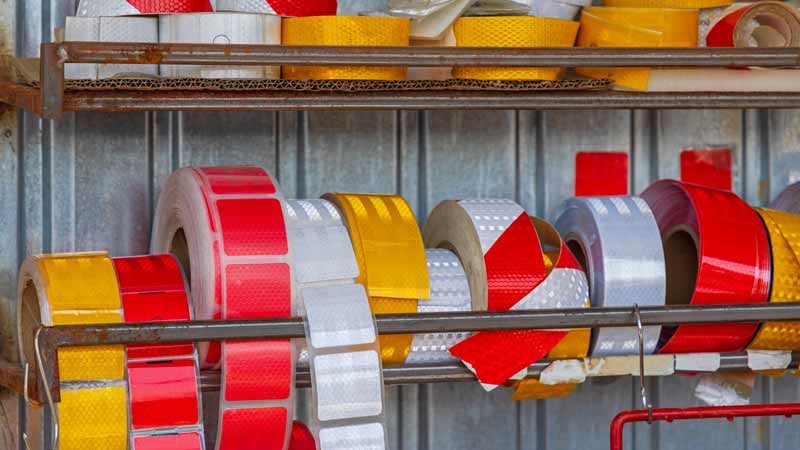
Where to buy DOT tape
DOT tape is widely available. However, you need to be sure the product meets DOT regulations in terms of reflectiveness, width, and color. Companies like Brady can confirm that their DOT C2 reflective tape meets compliance standards, which is important for the confidence and peace of mind of truck owners.
